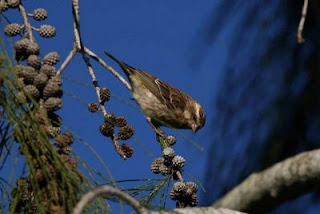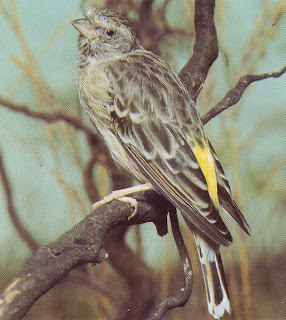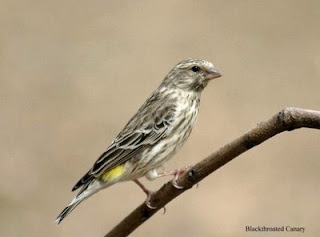Yellow Rumped Seed Eater or well known as Black Throated Canary, in its origin have been recognized in 7 [seven] different types, based on its origin area. The differences are in the color, shape and its song. The details of the difference is very limited, as you can only recognize it when they are placed together in the same place or close enough for us to see the differences. It is easier to see the differences if we could have those all kinds, but we can also can see those birds based on its pictures anyway. Some pictures belows may could show a little bit about the colors differential for us to get visualization or overview.

This pictures shows a kind of Yellow Rumped Seed Eater from Kenya origin. Their overall color is more brown, compare to other Yellow rump, which usually more gray in color. Another kind like this one, which have been introduced to Indonesia many years ago, used to be called by Indonesian birds lover as Kingstone or Senegal Black Throat. They had no black spots on the throat, but instead of that they have black color 'mustache' in the left & right side oh the throat, just like the mozambiq finch. Their sing abilities also not as good as the other kind.

This one in Indonesia used to be called as the Black Throat, from Boswana. The characteristics, which to be recognized by birds lover were black color in the throat is much more than other kinds, overall color is more gray than the brown, the white eye brow is duller that the upper kind/kenya or senegal. This kind has slighter body shape and also famous with its best singing abilities, covering the songs and the acts. Based on those superiorities, this kind became the most favorite one to be collected by birds lover in Indonesia. The higher price of this kind also automatically occurs.

The last picture is came from Southern Area [of Africa]. This kind is close to its relative, the Boswana origin, with darker gray colors, little bit bigger body diameter [looked more fatty] and different shape of head/top. The singing abilities is a little bit lower than the Boswana kind, as the song is too rapid in cadence and beats and the lower sound level.
Today, as some kinds of those Yellow Rumped Seeds Eaters, which have been introduced to Indonesia for few decades, have been lost in its details characteristic by the creativity of many breeders. So many kinds have been crossed to each kind, resulting so many hybrids, so we could not see clearly now where the differences are. But some original race in limited number is still exist in the hand of some limited breeders.
If you think you have other opinion or reference regarding those references on above, please do not hesitate to give and post your comments in the available space by clicking the comment's button below.





